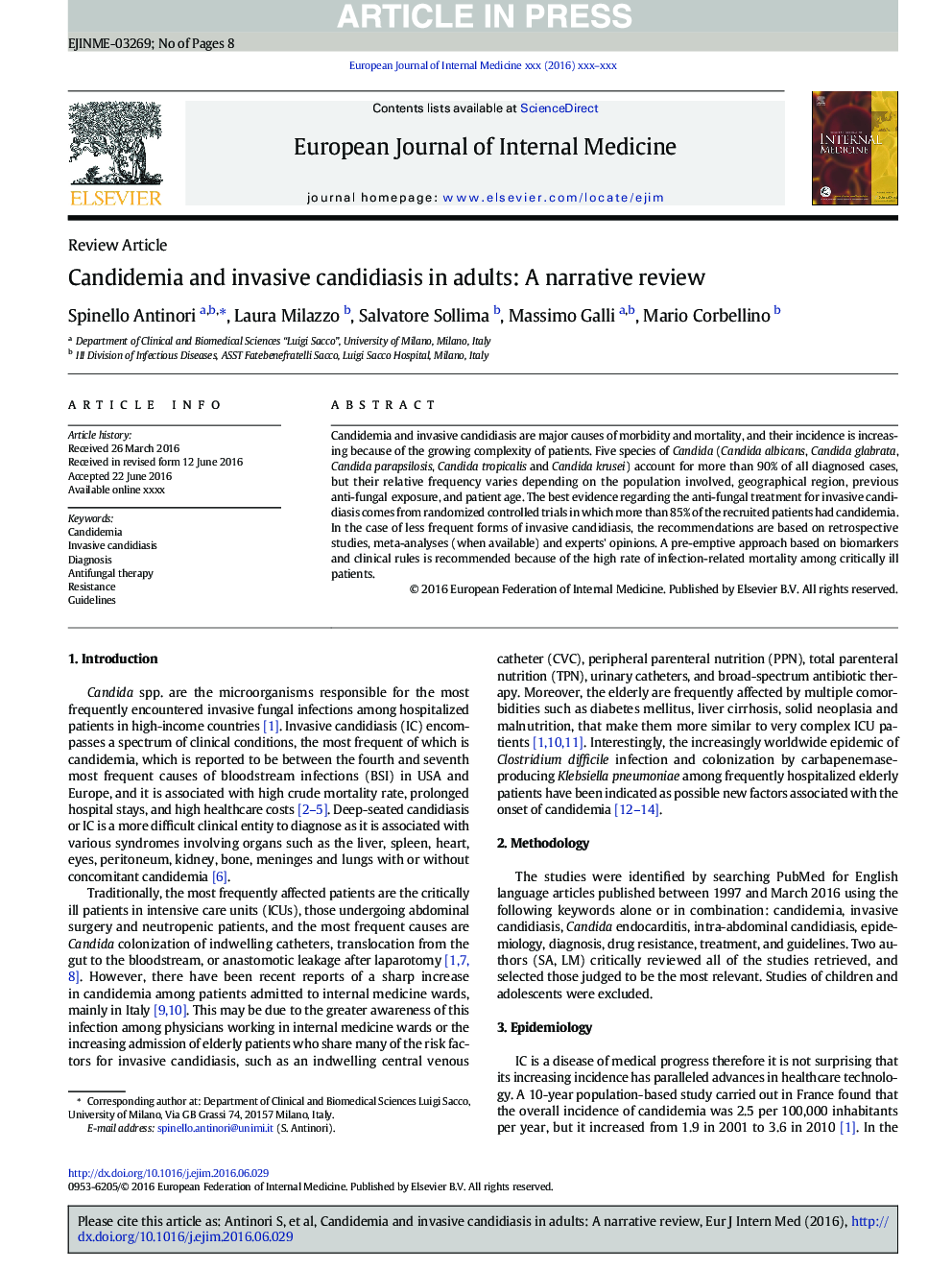| Article ID | Journal | Published Year | Pages | File Type |
|---|---|---|---|---|
| 5679044 | European Journal of Internal Medicine | 2016 | 8 Pages |
Abstract
Candidemia and invasive candidiasis are major causes of morbidity and mortality, and their incidence is increasing because of the growing complexity of patients. Five species of Candida (Candida albicans, Candida glabrata, Candida parapsilosis, Candida tropicalis and Candida krusei) account for more than 90% of all diagnosed cases, but their relative frequency varies depending on the population involved, geographical region, previous anti-fungal exposure, and patient age. The best evidence regarding the anti-fungal treatment for invasive candidiasis comes from randomized controlled trials in which more than 85% of the recruited patients had candidemia. In the case of less frequent forms of invasive candidiasis, the recommendations are based on retrospective studies, meta-analyses (when available) and experts' opinions. A pre-emptive approach based on biomarkers and clinical rules is recommended because of the high rate of infection-related mortality among critically ill patients.
Related Topics
Health Sciences
Medicine and Dentistry
Medicine and Dentistry (General)
Authors
Spinello Antinori, Laura Milazzo, Salvatore Sollima, Massimo Galli, Mario Corbellino,
